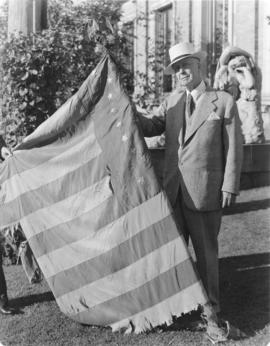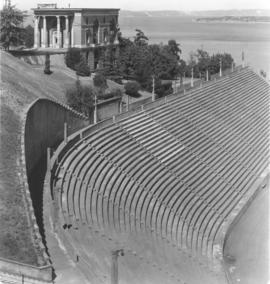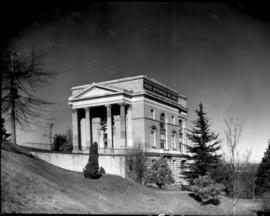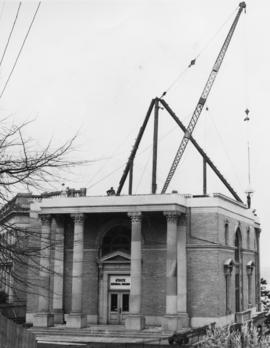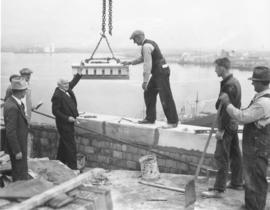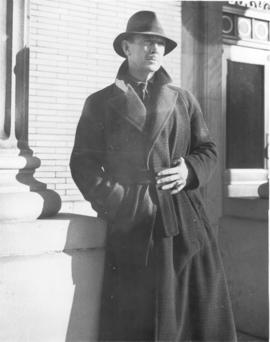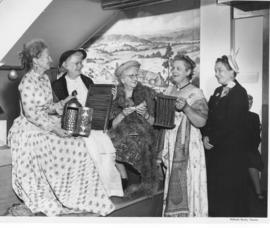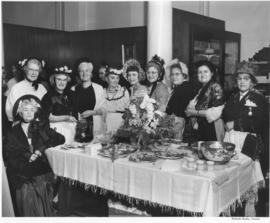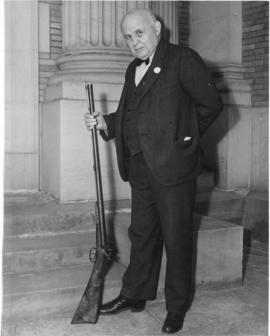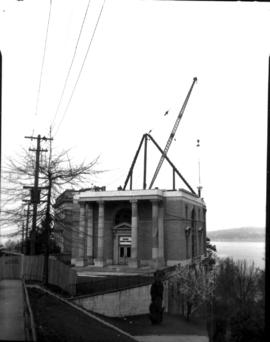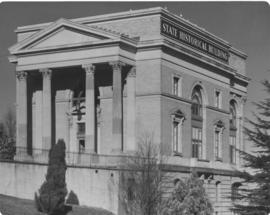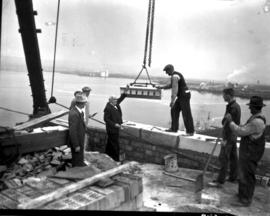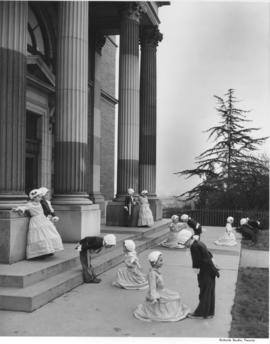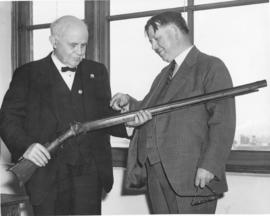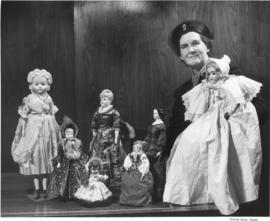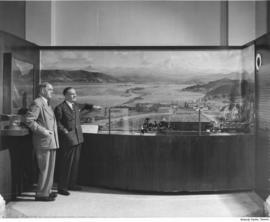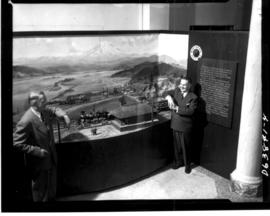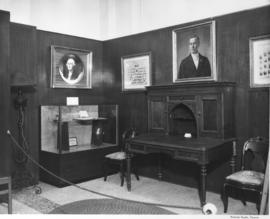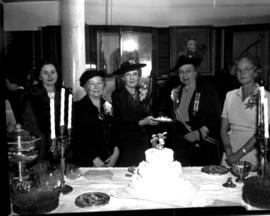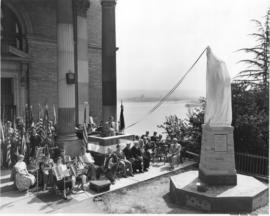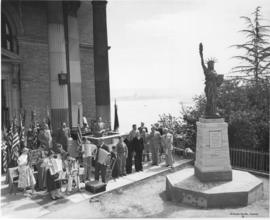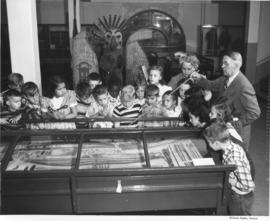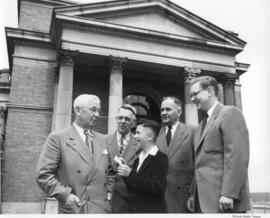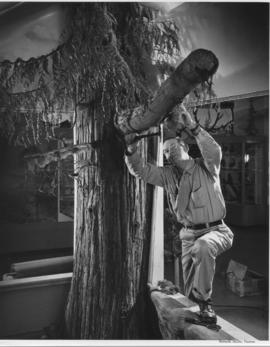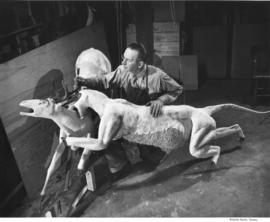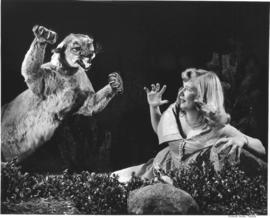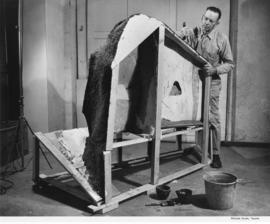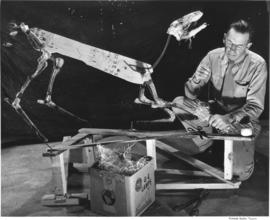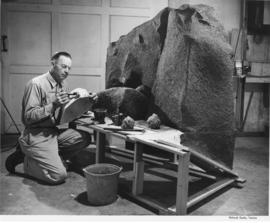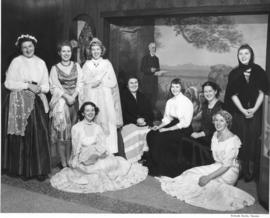- Item
- 1935-08
Part of Richards Studio Photographs
In August of 1935, General James M. Ashton posed at the Ferry Museum, 315 North Stadium Way, with an old cavalry guidon with stars in a circle pattern. The flag was the one presented to Troop "B" by Clinton P. Ferry when the troop served as the guard of honor at the 1889 inaugural ceremonies of Elisha P. Ferry as the first Governor of Washington State. Elisha P. Ferry was Clinton P. Ferry's uncle. General Ashton had served as captain in Troop B nearly 50 years ago. Troop B is actually designated as the Headquarters Troop, 24th Cavalry Division, Washington National Guard and it is the oldest military group in the state. Clinton Ferry's large personal collection of antiques and historic artifacts was housed in the Ferry Museum until the whole collection was donated to the Washington State Historical Society in 1930. (T. Times 9-11-1935, pg. 3)
Ferry Museum (Tacoma); Flags; Washington National Guard, 24th Cavalry Division (Tacoma); Ashton, James M.;
